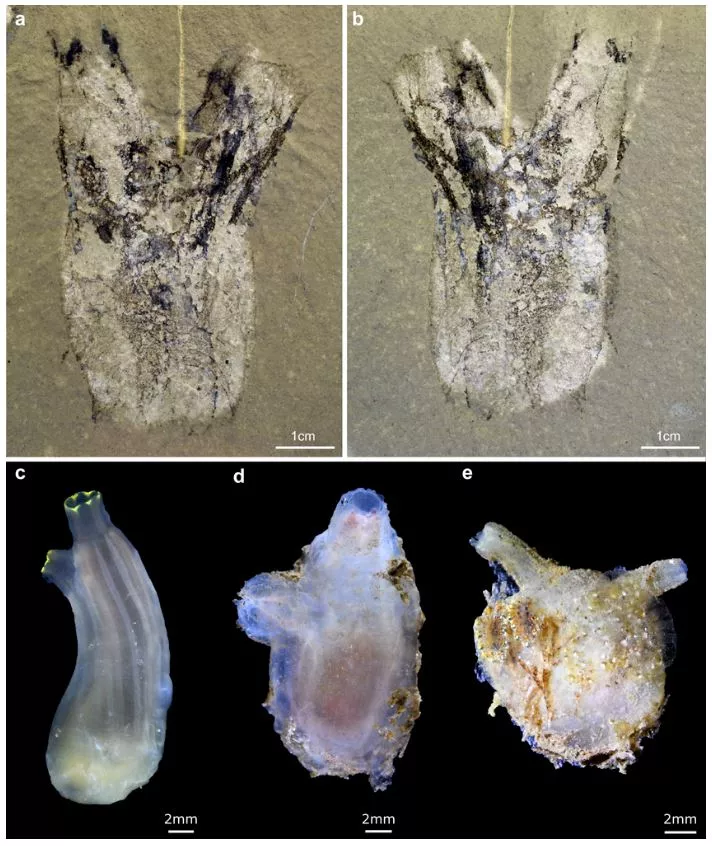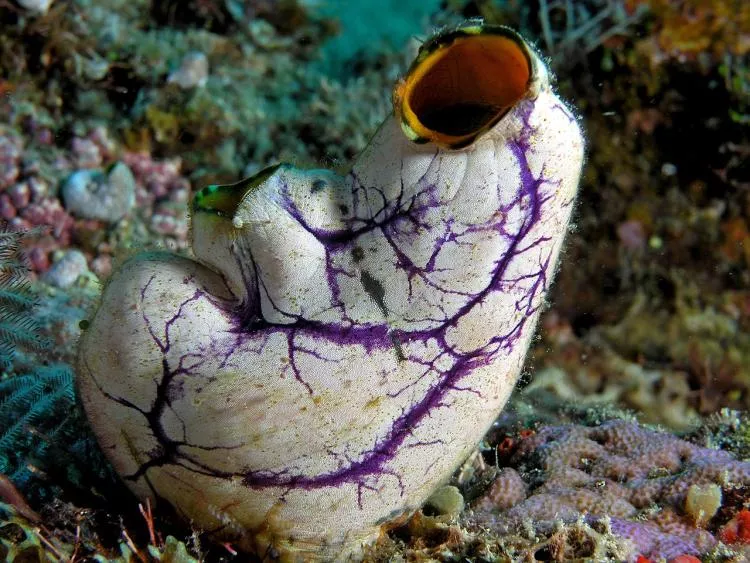Origins of vertebrates may be pushed back by 500-million-year-old sea squirt fossil
A sea squirt fossil has been found to be an exact replica of some present-day tunicates.
In 2019, paleontologist Karma Nanglu from Harvard University received a finger-sized fossil. The specimen had originated from a fossil-rich stratum of Cambrian limestone in western Utah, and had been kept in a drawer at a Salt Lake City museum for years.
Upon hearing that there could be a very old tunicate, Nanglu expressed excitement interlaced with caution: "That's a group for which there is essentially no fossil record for the entire 500 million years of recorded history."
Nanglu and his co-authors claim the immaculately preserved 500-million-year-old fossil to be an exact replica of some tunicates living today, with two siphons to filter organic particles from the water and intricate musculature controlling the siphons.
Nicholas Treen, a developmental biologist at Princeton University who was not involved in the study, said that it looked like "a tunicate that died yesterday and just so happened to fall down on some rock."
The finding provides hints as to the timing and growth of early tunicates and may even advance the time of the genesis of vertebrates, which include humans.
Approximately 3,000 different tunicate species can be found in practically every ocean region today. The majority have a two-stage life cycle as a free-swimming, tadpole-like larva and a stationary adult once the larva settles.
The notochord, which serves as the building block for the spinal column and is present in tunicate larvae, is a characteristic of the chordate group, which includes all vertebrates.
However, there are very few fossilized tunicates, for reasons that paleontologists are unsure about. The most well-known Shankouclava anningense, which dates back 520 million years, has generated debate: It resembles a tunicate in that it has a siphon and appears to filter feed, but other than that, it is unlike anything in existence today.

The tunicate Megasiphon thylakos (Images a to b) and modern benthic tunicates (Images c to e). Image a: Holotype (UMNH.IP.6079) and only known specimen of Megasiphon thylakos, showing overall morphology, including paired siphons and barrel-shaped body. Image b: Counterpart to Image a. Image c: Ciona intestinalis (Phlebobranchia). Image d: Ascidiella sp. (Phlebobranchia) Image e: Molgula manhattensis (Stolidobranchia). Images by Karma Nanglu.
The new species is clearly a tunicate since the characteristics of its soft body have been retained.
Nanglu and colleagues named the species Megasiphon thylakos, in honour of the creature's huge siphons and sac-like body (Thylakos is the Greek word for "pouch").
Modern tunicates have bands of longitudinal muscles running down their body as well as circular muscles surrounding the siphons that regulate them. They use these siphons to aid filter-feed. According to Nanglu, the musculature of Megasiphon is almost exactly like that of the contemporary tunicate Ciona intestinalis.
The siphon muscles that a tunicate develops as it grows come from the same cells that make up the heart tissue of contemporary vertebrates. Although its interior organs are not intact, the presence of muscles in the Megasiphon suggests that it may have once possessed a heart.
The fossil answers a long-standing puzzle about early chordate evolution: was the progenitor of all tunicates a free-swimming creature or was it anchored to the bottom?
Megasiphon largely supports the latter theory due to its likeness to live, sessile tunicates. The discovery implies that the tunicates' two-part life cycle and capacity for metamorphosis are traits inherited from their ancestors.
The genesis of vertebrates, presently estimated to have occurred around 450 million years ago, may have occurred earlier than currently considered if such a full and recognized tunicate had existed at that time.
This hypothesis is supported by other fossils, including one called Metaspriggina, which dates as far back as 505 million years and is thought to have swum with Megasiphon. Metaspriggina possessed eyes and muscle blocks, and was likely a notochord.
Therefore, by 500 million years ago, both it and Megasiphon already had some characteristics thought to be exclusive to vertebrates, pointing to the group's early origin.
However, the fossil alone is insufficient to alter the course of vertebrate evolution. "Humans are naturally drawn to this origins question, and this helps to develop that story, but we need more fossil evidence," Nanglu said.
Well, that is absolutely why we are in this situation in the first place, to address these enduring issues.




























